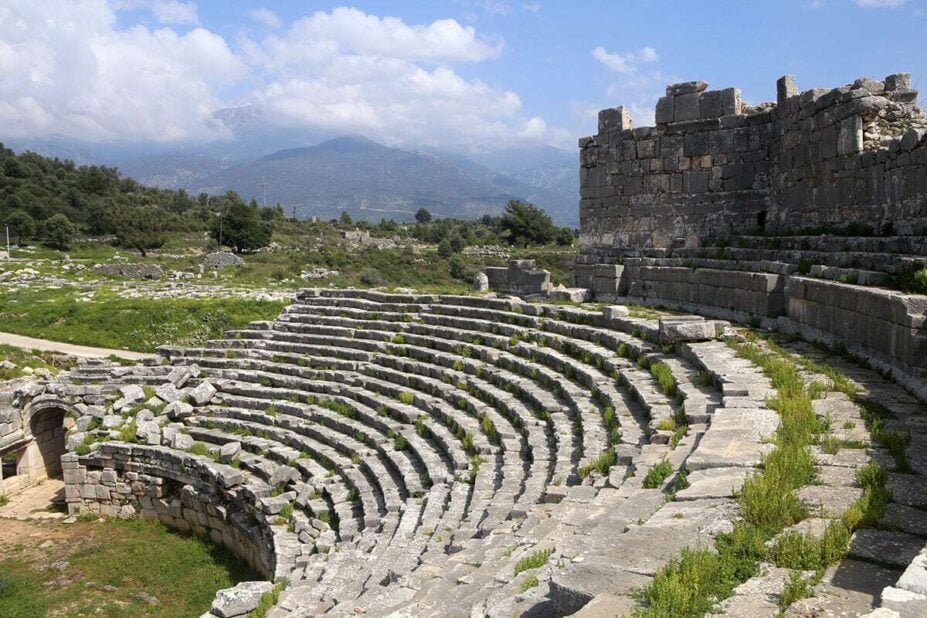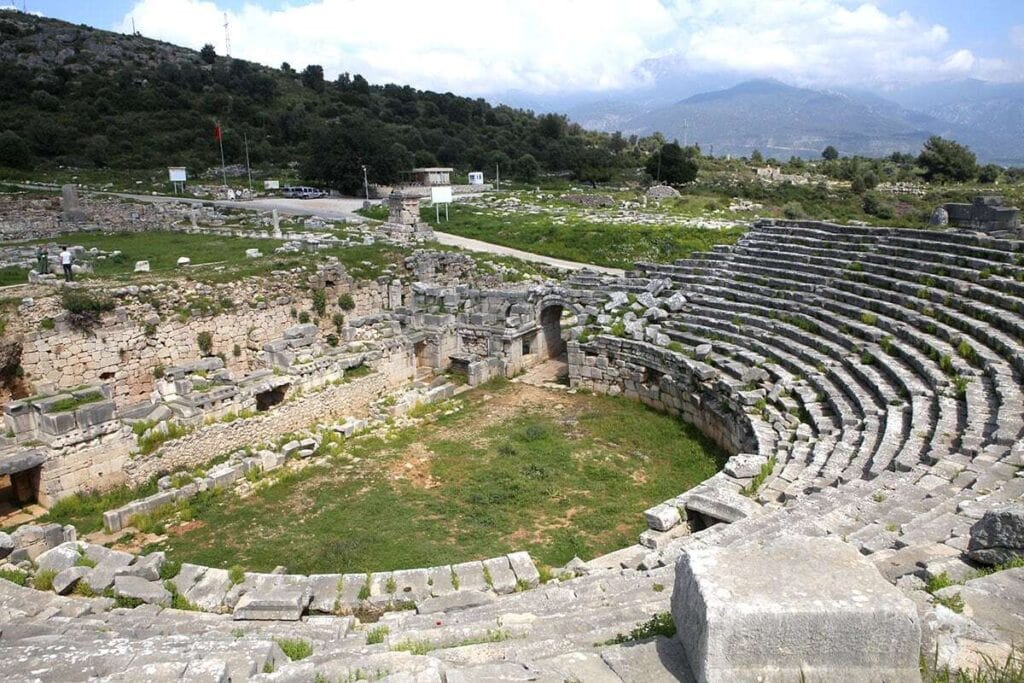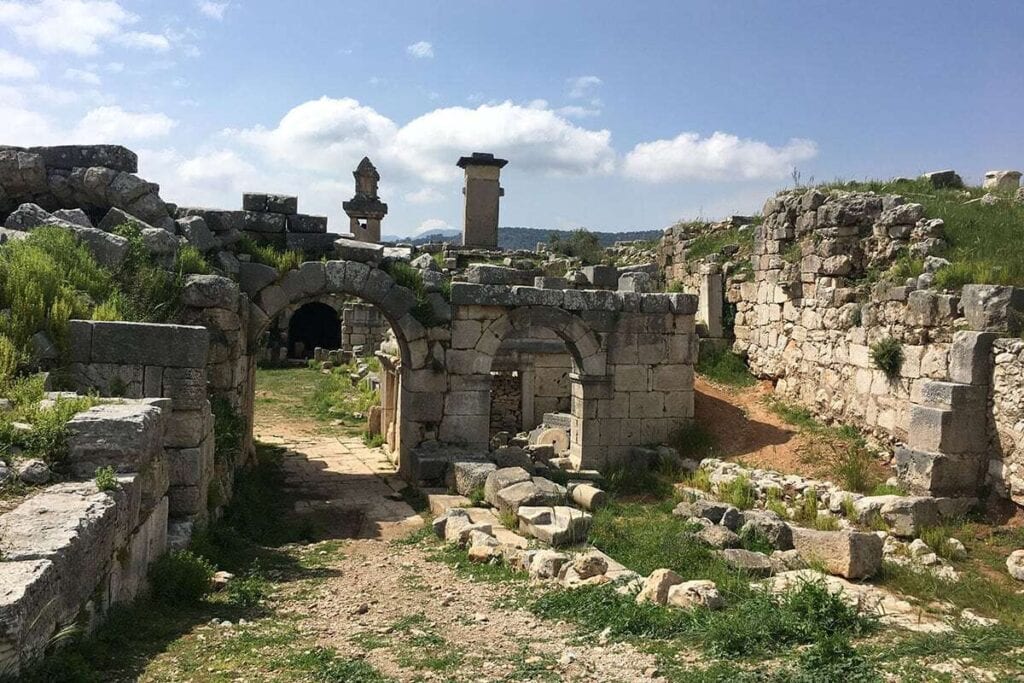Xantos (Santos) is 40 km from Kas and had an important place in Lycian cities, It is known that it was the capital in the first periods of the Lycian civilization. The excavations for Xantos began in the early 1950s in the region, and has been added to UNESCO World Cultural Heritage List from1988 onwards.
The historian Herodotus included an event in Xanthos in his narratives. In 545 B.C., Xanthos warriors, who could not resist the attack of the army led by the Persian emperor Harpagos, set fire to the whole city with their families for the aim of not surrendering to Persians. Eighty families who were outside the city at the time returned and has rebuilt the city with the new immigrants.
The city preserved its importance until the Hellenistic period but after that under Hellenistic rule it lost its importance when Patara became the capital city with the capture of Lycia by Alexander the Great. It remained in the background after Patara and survived until the end of the Byzantine period, You can visit city walls, acropolis, church, bath, theater buildings and monuments from different periods. The monumental tombs of Xantos are world famous. Some thoms and monuments are taken to England in 1842 by the English traveler Sir Charles Fellows. Those are Nereid Monument, the Harpy Monument and the Pavaya Tomb and are on still display at the British Museum.
Xantos is located in village of Kınık and is open to visitors every day. The entrance fee is TL 12.0
Ksantos, Kınık, 07970 Kaş/Antalya, Turkey






